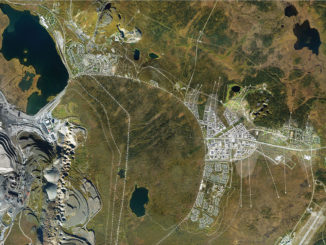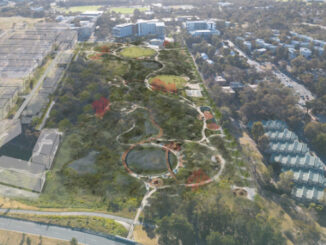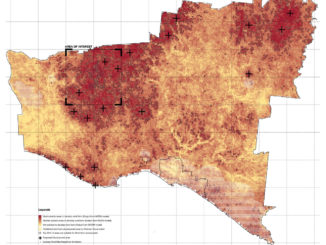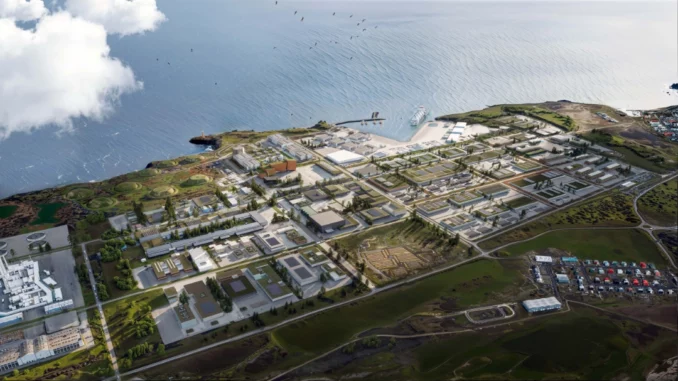
Helguvik-Bergvik is set to revolutionise Iceland’s industrial landscape with a groundbreaking eco-industrial park—where cutting-edge circular economy meets sustainable energy solutions, redefining the industry’s future on a global scale.
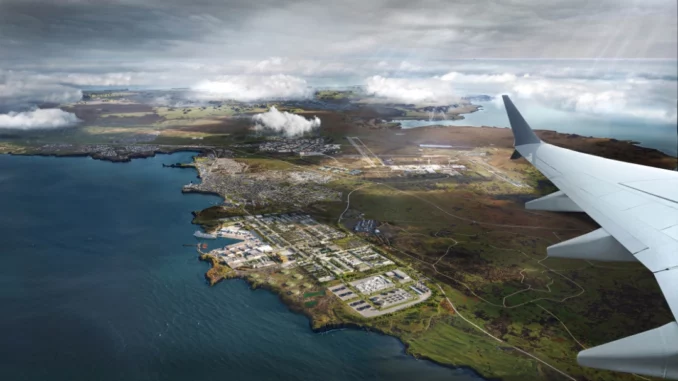
The Helguvik-Bergvik Framework Plan represents a progressive approach to sustainable industrial development in Iceland, emphasizing the integration of environmental, social, and economic factors into a unified vision. Located in the Suðurnes region, this project focuses on creating an eco-industrial park designed to establish the area as a hub for circular economy practices, innovation, and sustainable energy solutions. Developed for Kadeco, the plan involved KCAP collaborating with key partners such as Buro Happold, EFLA Consulting, and BCI Global, drawing on the expertise of professionals in urban planning, landscape architecture, energy transformation, and related fields.
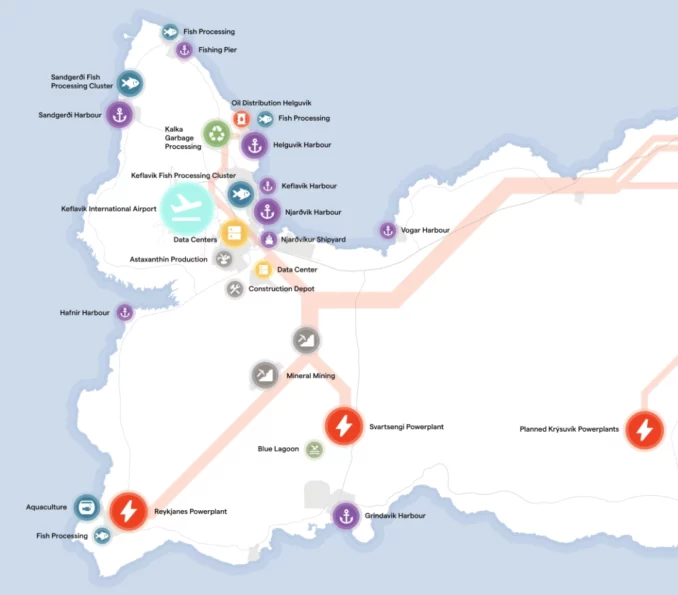
The core objective of the plan is to transform Helguvik-Bergvík into a circular manufacturing and energy hub, fostering economic growth while reducing environmental impact. By leveraging its strategic location near Keflavík Airport, the region has the potential to become Iceland’s leading eco-industrial area, creating jobs and enhancing the region’s competitiveness on a global scale. The plan also highlights the importance of collaboration among industries to promote waste-to-energy initiatives and other novel methods of reducing carbon emissions.
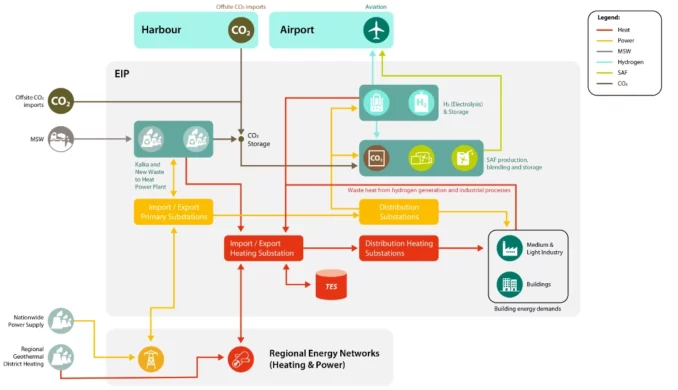
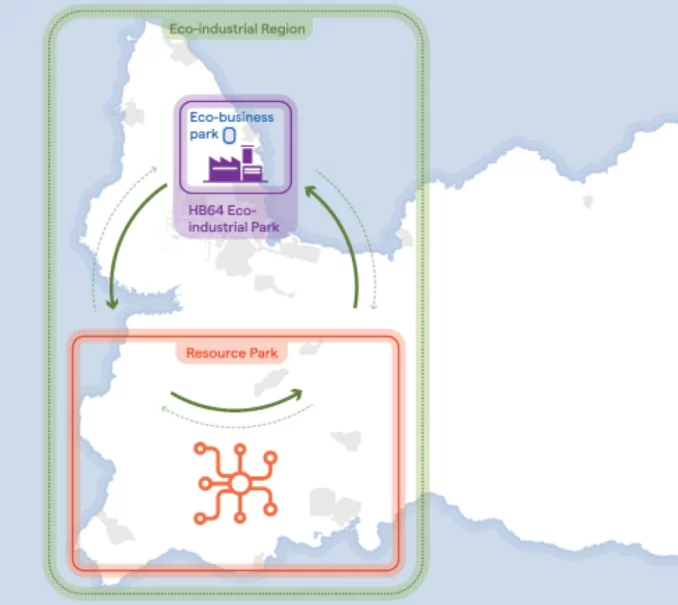
One of the plan’s guiding principles is circularity, which lies at the heart of the development. The circularity strategy aims to promote efficient resource use, minimise waste, and create synergies between industries to improve overall sustainability. The Helguvík-Bergvík site will be divided into six character areas, each focusing on different sectors such as clean energy, innovation park, circular economy, clean building, port logistics, food and bioeconomy. This division allows for tailored strategies for each area, ensuring a holistic and well-organised approach to land use and industrial activities.
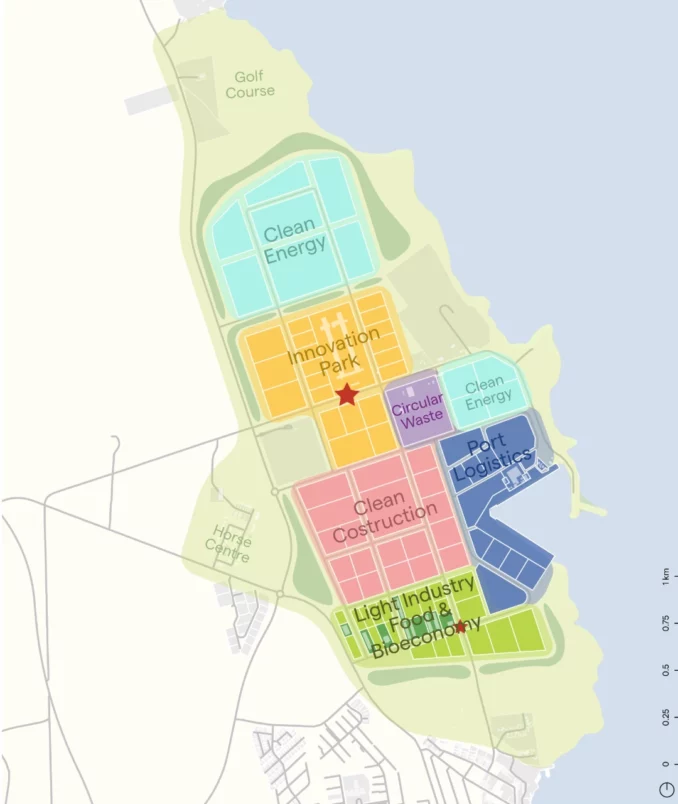
The plan also pays special attention to urban design guidelines, which are crucial for ensuring the successful integration of the eco-industrial park into the broader landscape and infrastructure of the area. It addresses plot divisions, architectural typologies, landscape design, mobility networks and infrastructure development—all of which are essential for creating a functional and attractive industrial zone. For example, the plan promotes flexible plot divisions to accommodate diverse industries, ensuring adaptability for future needs. Additionally, the use of both granular and industrial building typologies fosters a dynamic environment conducive to innovation and sustainability.
Landscape and public spaces play an important role in the overall design of the site. The plan integrates the natural features of the region—such as strategically placed ponds and artificial hills—to create sheltered areas for green space, while also serving as visual buffers for industrial activities. The landscape elements are designed to enhance the site’s aesthetic appeal, making it a more pleasant environment for workers and visitors. This approach helps balance the industrial nature of the site with a commitment to creating a healthy and attractive working environment.
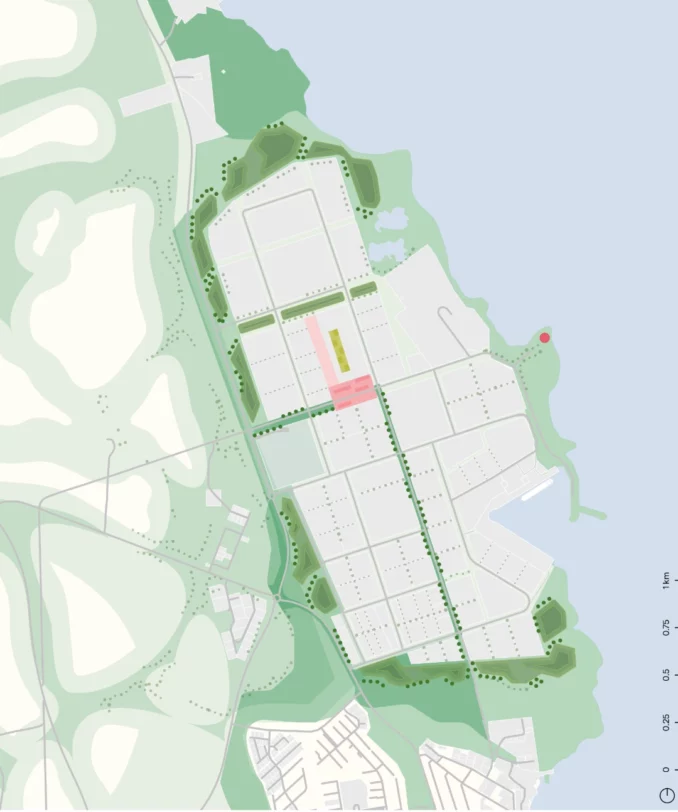
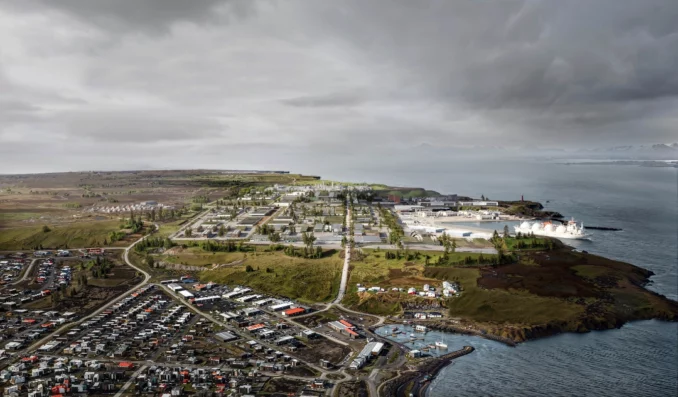
Mobility and accessibility are also key components of the plan. A robust road and active mobility network will connect the various parts of the eco-industrial park, ensuring easy access for workers, residents, and visitors. The plan emphasises sustainable transportation methods—such as cycling and walking—and aims to improve public transportation with strategically located bus stops. This network supports the industrial activities within the park while also integrating the site into the broader regional infrastructure, making it a central hub for both economic and social activity.
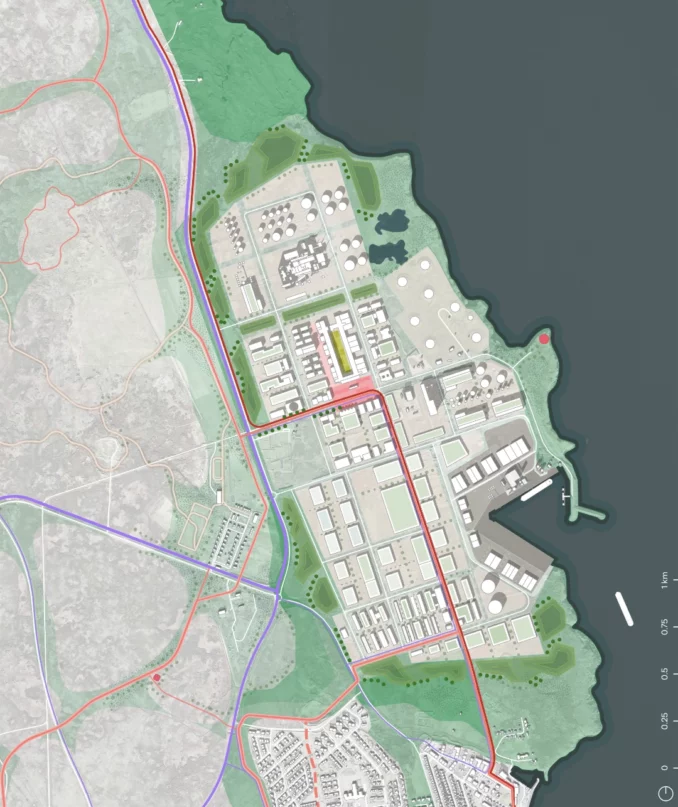
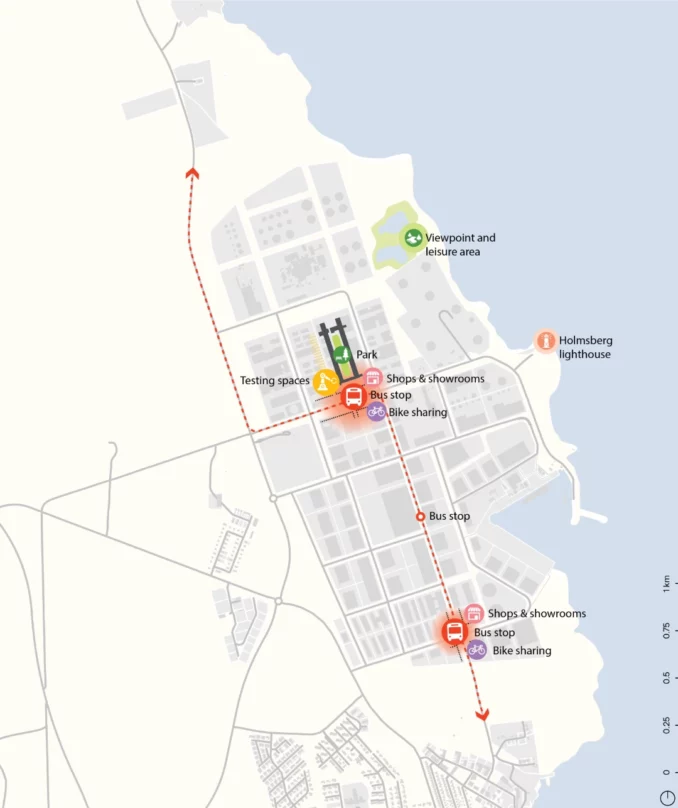
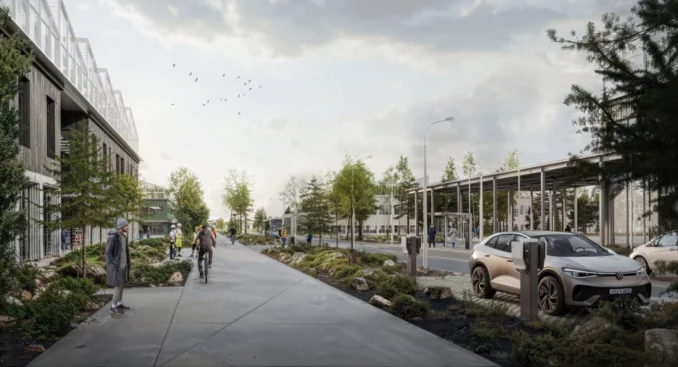
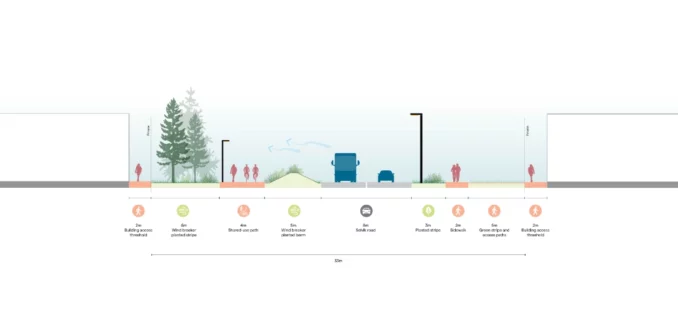
The plan is structured in phases, with a 25-year development timeline that allows for gradual growth and adaptability to market changes and technological advancements. This phased approach ensures that the site can evolve with future developments in renewable energy and other industries, therefore, confidently maintaining its relevance and competitiveness over time. The plan’s implementation guidelines also stress the importance of flexibility, allowing for modifications as needed to accommodate new industries or technologies.
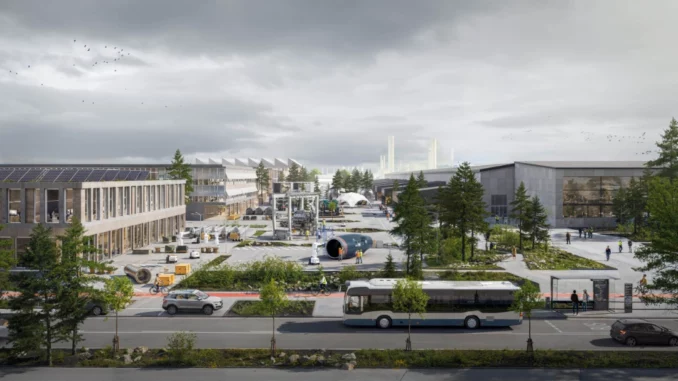
In conclusion, the Helguvik-Bergvik Framework Plan is a bold and innovative path forward for the development of a new sustainable and resilient industrial ecosystem, in Iceland. Through its focus on circular economy principles, flexible design strategies and phased development; it offers a blueprint for transforming the Suðurnes region into a model of eco-industrial success. The combination of industrial efficiency, environmental stewardship and social responsibility will help further position the area as a leader in sustainable development—both locally, and, on the international stage.
Helguvik-Bergvik Framework Plan
Location: Suðurnes, Iceland
Client: Kadeco
Program: Framework plan for eco-industrial area
Team: KCAP, Buro Happold, EFLA Consulting, BCI Global
Images Credit: (c) KCAP unless otherwise captioned.

